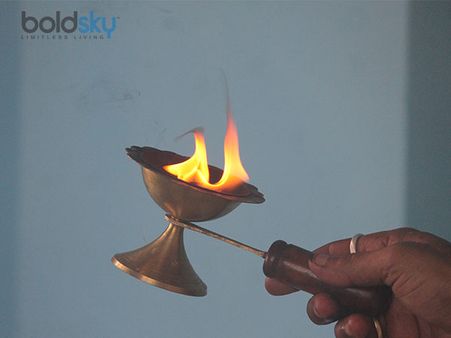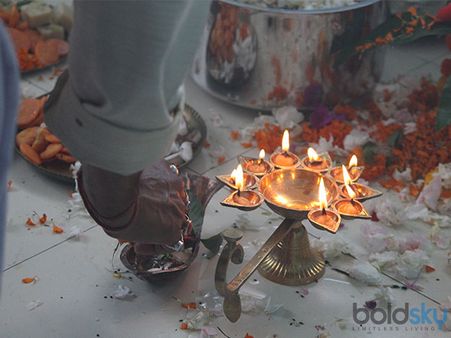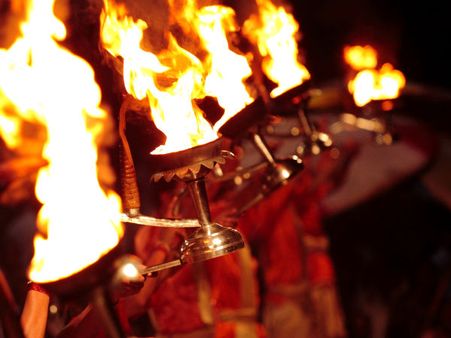Just In
- 2 hrs ago

- 6 hrs ago

- 9 hrs ago

- 9 hrs ago

Don't Miss
- Movies
 Queen Of Tears Episode 14 OTT Release Date, Time, Platform: When & Where To Watch? What To Expect? DEETS Out
Queen Of Tears Episode 14 OTT Release Date, Time, Platform: When & Where To Watch? What To Expect? DEETS Out - News
 IPL 2024: Ex-cricketer Tells Why Mumbai Indians Replaced Rohit Sharma With Hardik Pandya As Captain
IPL 2024: Ex-cricketer Tells Why Mumbai Indians Replaced Rohit Sharma With Hardik Pandya As Captain - Automobiles
 Tata Altroz Records a 55% Sales Growth in March 2024
Tata Altroz Records a 55% Sales Growth in March 2024 - Sports
 IPL 2024: DC vs SRH Live Score & Updates; Head-Sharma begin Sunrisers batting as Pant invites Cummins to bat first
IPL 2024: DC vs SRH Live Score & Updates; Head-Sharma begin Sunrisers batting as Pant invites Cummins to bat first - Finance
 Rs 17.50/Share Dividend: Tata Mid Cap To Consider Dividend On April 29, LIC Stake 9.88%
Rs 17.50/Share Dividend: Tata Mid Cap To Consider Dividend On April 29, LIC Stake 9.88% - Education
 Railway RPF Recruitment 2024; Apply Online for 4660 Post Vacancies @rpf.indianrailways.gov.in
Railway RPF Recruitment 2024; Apply Online for 4660 Post Vacancies @rpf.indianrailways.gov.in - Technology
 Best Noise-Cancelling Earbuds Under Rs 5,000: CMF Buds Pro, Redmi Buds 5, Realme Buds Air 5, and More
Best Noise-Cancelling Earbuds Under Rs 5,000: CMF Buds Pro, Redmi Buds 5, Realme Buds Air 5, and More - Travel
 Journey From Delhi To Ooty: Top Transport Options And Attractions
Journey From Delhi To Ooty: Top Transport Options And Attractions
Importance Of Aarti In Hinduism
Aarti is an inseparable part of Hindu puja rituals. An aarti is usually performed after all the puja rituals are completed. It is performed by lighting an oil lamp and circling it around the deity. Apart from oil lamps, dhuna, conch shell, agarbatthis are also offered during the aarti to the deity. Sometimes, an aarti is also performed for a person to guard him/her against evil eyes.
The ritual of aarti is said to descend from the ancient Vedic fire rituals. Other views say that the practice started many centuries ago when the idol of the deities were kept inside the inner sanctum of the temple and an oil lamp was lit to lighten up the dark premises. When the devotees entered, the priest used to take the lamp near the deity for a clearer view. Gradually, this simple practice developed into a ritual.
THE CONCEPT AND SIGNIFICANCE OF ARDHANARISHWARA
The word aarti comes from 'aa' which means complete and 'rati' which means love. Therefore, aarti is an expression of complete and unflinching love for God. That is why aarti is performed with great devotion by singing hymns, clapping, adoration and meditative awareness.
You may have wondered why is aarti used to worship the Gods or why is aarti important? Let us look for the answers in the following slides.

The Spiritual-Scientific Perspective
During a puja it is very important to perform each act as per the science of spirituality. Most of us are not aware of various facts. For example, while offering aarti to God, one can move the platter in a clockwise circle from the Anāhat-chakra (at the heart area) to the Ādnyā-chakra (mid-brow region) of the deity or that one must perform circumambulation after aarti. Most of us do not reap the benefits of these rituals because we do not know or understand the correct way to do it.

The Right Way Out
The aarti plate is usually made of metal (silver, bronze or copper). A lamp made of kneaded flour, mud or metal, filled with oil or ghee, should be placed on it. One or more cotton wicks (always an odd number) should be put into the oil and then lighted or camphor can be burnt instead. The plate may also contain flowers, incense and akshata (rice). In some temples, a plate is not used and the priest holds the ghee lamp in his hand when offering it to the deities.

The Right Way Out
The
purpose
of
performing
aarti
is
the
waving
of
lighted
wicks
before
the
deities
in
a
spirit
of
humility
and
gratitude,
wherein
faithful
followers
become
immersed
in
God's
divine
form.
It
symbolises
the
five
elements:
1.
Sky
(akash)
2.
Wind
(vayu)
3.
Fire
(agni)
4.
Water
(jal)
5.
Earth
(prithvi)

The Scientific Explanation
When offering aarti using a lamp with five wicks (also called pancha-arti), the platter containing this lit lamp should be waved in a full circle in front of the deity. This results in a speedy circular movement of the Sattva frequencies emitted by the flame of the lamp. These Sattva frequencies then get converted gradually into Rajas frequencies.

The Scientific Explanation
A protective armour of these frequencies is formed around the soul of the worshipper offering the aarti and is known as a 'tarangkavach'. The more the spiritual emotion of the worshipper offering the aarti, the longer the armour lasts. These frequencies then keep increasing as the person concentrates on aarti.

Significance Of Aarti
Aarti is waved in circular fashion in clockwise manner around the deity. After every circle (or second or third circle), when aarti has reached the bottom (6-8 o'clock position), the performer waves it backwards while remaining in the bottom (4-6 o'clock position) and then continues waving it in clockwise fashion. It symbolises that God is the centre of all our activities. It reminds the devotee that God comes first and all other wordly activities are secondary. Aarti is not only limited to God. Aarti can performed not only to all forms of life, but also inanimate objects which help in progress of the culture. This is exemplified by performer of the aarti waving aarti to all the devotees as the aarti comes to the end - signifying that everyone has a part of God within that the performer respects and bows down to.
-
 insync100 Popular Hindu Baby Names For Girls And Boys That Start With The Letter M
insync100 Popular Hindu Baby Names For Girls And Boys That Start With The Letter M -
 yoga spiritualityWhen Is Magh Pradosh Vrat 2024? Date, Shubh Muhurat, Puja Vidhi, Mantra, And Remedies Related To Lord Shiva
yoga spiritualityWhen Is Magh Pradosh Vrat 2024? Date, Shubh Muhurat, Puja Vidhi, Mantra, And Remedies Related To Lord Shiva -
 yoga spiritualityFebruary 2024 Festival List: Check Full List For Indian Festivals And Vrats
yoga spiritualityFebruary 2024 Festival List: Check Full List For Indian Festivals And Vrats -
 yoga spiritualityPaush Purnima 2024 Remedies: Try These Upay For Peace, Prosperity, Money And Happiness In Life
yoga spiritualityPaush Purnima 2024 Remedies: Try These Upay For Peace, Prosperity, Money And Happiness In Life -
 yoga spiritualityWhen Will Pran Pratishtha Happen In Ayodhya Ram Mandir? Significance Of Pran Pratishtha In Hinduism
yoga spiritualityWhen Will Pran Pratishtha Happen In Ayodhya Ram Mandir? Significance Of Pran Pratishtha In Hinduism -
 yoga spirituality‘Saat Phere' Mandatory In Hindu Marriage, Rules Allahabad Court: Know Meaning Of 7 Pheras (Auspicious Rounds)
yoga spirituality‘Saat Phere' Mandatory In Hindu Marriage, Rules Allahabad Court: Know Meaning Of 7 Pheras (Auspicious Rounds) -
 yoga spiritualityTulsidas Jayanti 2023: Date, History, Significance, And Celebrations
yoga spiritualityTulsidas Jayanti 2023: Date, History, Significance, And Celebrations -
 yoga spiritualityNuh Violence In Haryana: Importance Of Religious Procession In Hinduism, What The Indian Constitution Says
yoga spiritualityNuh Violence In Haryana: Importance Of Religious Procession In Hinduism, What The Indian Constitution Says -
 yoga spiritualityHindu Temples - Know The Spiritual Significance And Symbolism
yoga spiritualityHindu Temples - Know The Spiritual Significance And Symbolism -
 yoga spiritualityVadapalli Narasimha Swamy Temple, Nalgonda: Where The Lord's Breath Is Felt!
yoga spiritualityVadapalli Narasimha Swamy Temple, Nalgonda: Where The Lord's Breath Is Felt! -
 yoga spiritualityEka Sloki Ramayanam: Meaning And Benefits Of Reading The Ramayana In One Shloka!
yoga spiritualityEka Sloki Ramayanam: Meaning And Benefits Of Reading The Ramayana In One Shloka! -
 yoga spiritualityNavabrindavanam - History And Significance Of The Tombs of The Nine Saints!
yoga spiritualityNavabrindavanam - History And Significance Of The Tombs of The Nine Saints!


 Click it and Unblock the Notifications
Click it and Unblock the Notifications



